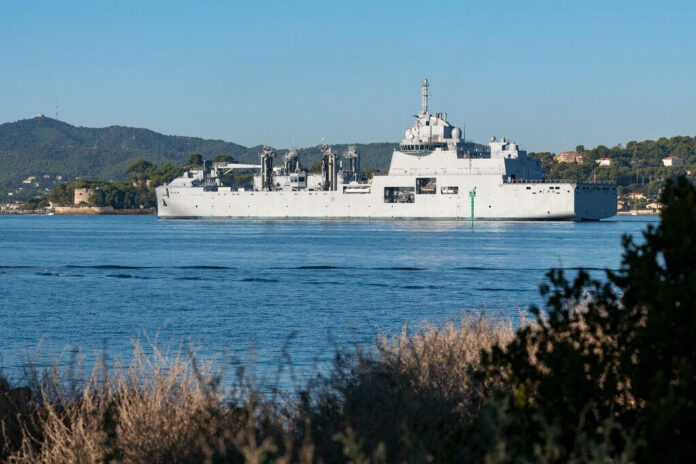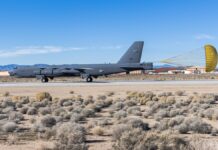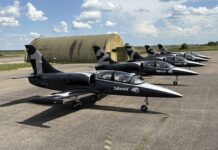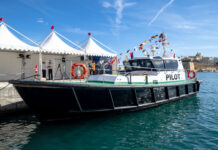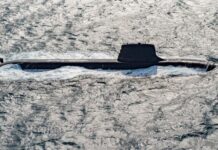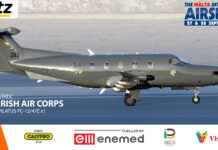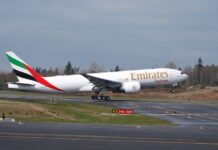- On Wednesday August 27, 2023, the BRF Jacques Chevallier set sail for its long-term deployment, which constitutes an important step towards its admission to active service by the French Navy . This deployment is intended to verify the military characteristics of the vessel , in particular its endurance, its ability to navigate in hot and cold waters and its interoperability with our partners and allies .
- The FLOTLOG program (logistics fleet) confirmed by the 2024-2030 military programming law, provides for the delivery of 4 BRFs to the Navy. Resolutely modern, double-hulled, the BRF will renew the Navy’s resources to ensure autonomy, freedom of action and permanence at sea for naval forces.
- With the Jacques Chevallier class supply vessels, the French Navy honors the maritime engineers of the 19th and 20th centuries, whose work largely contributed to defining the means of today’s Navy.
The long-term deployment of the Jacques Chevallier , named in honor of the maritime engineer who was one of the fathers of naval nuclear propulsion in France and former General Delegate for Armaments, will extend from September 27 2023 to February 2, 2024. An integral part of the process of admission to active service of the Jacques Chevallier by the French Navy, this deployment of several months corresponds to the second stage of the “verification of military capabilities” phase. It ends the operational conditioning period for the BRF crew, which began on September 4, 2023.
The Jacques Chevallier will head west, in order to test its capabilities in varied maritime environments, but also to develop the interoperability of this new type of vessel with our partners and allies in the areas crossed. This period at sea, carried out far, long and with a crew, allows the BRF and its systems to be put to the test and allows sailors to become more familiar with this equipment.
Focus on Force Supply Buildings :
The BRF are versatile and strategic ships, the keystone of our strategic autonomy, allowing France to have an oceanic Navy. Their central missions are to support the carrier strike group around the aircraft carrier, to support the oceanic component of nuclear deterrence, and to participate in supporting combined operations by developing our interoperability.
The force supply vessels will replace the Var , Marne and Somme command and supply vessels (BCR), considerably improving their cargo and fuel carrying capacities, as well as their tactical capabilities. Capable of providing more than 13,000 m³ of fuel and 1,500 tonnes of freight, the BRFs participate in the development of the tactical situation and can be deployed autonomously in areas subject to asymmetric or residual threats.


